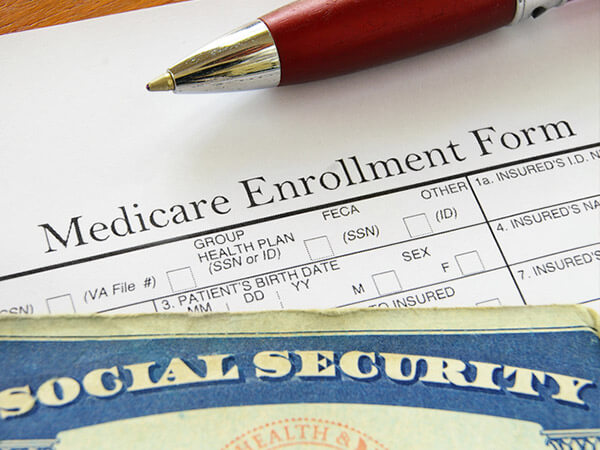
Medicare’s annual open enrollment period kicks off Thursday, and while some 2021 coverage changes have already been announced, other critical cost information remains to be determined.
What Is Open Enrollment?
Each year, recipients have an opportunity to change their Medicare health and drug plan selections during open enrollment, which runs from Oct. 15 to Dec. 7. Any changes go into effect Jan. 1.
During open enrollment, you can:
- Switch from Original Medicare to a Medicare Advantage plan. Or, vice versa.
- Switch from one Medicare Advantage plan to another.
- Join a Medicare Part D prescription drug plan.
- Switch from one Part D plan to another.
The Medicare Plan Finder is the best way to explore your open enrollment options. This online tool is designed to guide consumers step-by-step through the process of comparing plans.
Medicare Advantage
Open enrollment can be an especially crucial time for seniors enrolled in Medicare Advantage. These plans are offered by private insurance companies who contract with the Centers for Medicare & Medicaid Services, or CMS.
Medicare Advantage has become increasingly popular, with many plans offering $0 premiums and additional benefits that Original Medicare doesn’t cover, such as dental, vision and hearing.
About 36 percent of participants were enrolled in Medicare Advantage plans in 2020, up from 24 percent in 2010, according to the Kaiser Family Foundation.
In September, CMS announced that the Medicare Advantage average monthly premium may decrease an estimated 11 percent to $21 in 2021 from an average of $23.63 in 2020.
But Medicare Advantage plans can dramatically change from one year to the next. Private companies can drop doctors, hospitals and pharmacies from their networks or significantly alter premiums, deductibles and out-of-pocket costs to consumers.
In other words, what worked well for your budget in 2020 may be different next year. CMS recommends recipients use the Medicare Plan Finder tool to compare options.
Part D Changes
People with Original Medicare can also benefit from open enrollment by exploring prescription drug plans.
Original Medicare is government-run and includes Part A hospital insurance and Part B health coverage.
Unlike many Medicare Advantage plans, Original Medicare doesn’t bundle prescription drug coverage with Part A and Part B benefits. Instead, you must buy a standalone Part D prescription plan.
This is one of the areas where shopping, planning and understanding your options can really pay off.
Insulin Costs
A substantial change this year to many Part D plans is lower insulin costs. In September, President Donald Trump signed a series of executive orders. The one impacting insulin prices goes into effect Jan. 1.
According to CMS, seniors can access more than 1,600 Part D plans that now offer no more than a $35 monthly copay for insulin.
CMS has also added a new “Insulin Savings” filter on its Medicare Plan Finder tool to display Part D plans offering capped out-of-pocket costs for insulin.
Unknown Costs
On Oct. 1, CMS updated its Medicare Advantage and Part D plan information on the Medicare Plan Finder.
But one crucial detail remains uncertain: potential increases to premiums, deductibles and coinsurance amounts for Part A and Part B.
Most Medicare beneficiaries don’t pay a premium, or monthly fee, for Part A, which covers inpatient hospital, skilled nursing and some home health care services.
But it’s still unclear if Part A and Part B deductibles will increase for 2021 — and if so, by how much. A deductible is how much money enrollees must pay out of pocket before Medicare kicks in.
Unlike Part A, Part B also comes with a premium and this reoccurring monthly cost has skyrocketed in recent years.
From 2011 to 2020, the standard Part B premium increased 25 percent, from $115.40 to $144.50 per month.
But that doesn’t paint the full picture, according to Mary Johnson, Social Security and Medicare policy analyst for the Senior Citizen League, a nonpartisan advocacy group for older Americans.
“If you go back to the year 2000, the Part B premium was just $45.50,” Johnson said. “The percentage of increase from 2000 to 2020 is 218 percent.”
There are some protections in place to limit premium hikes, particularly for seniors who get Part B premiums deducted from their Social Security checks.
On Oct. 1, a last-minute short-term funding bill was signed into law to prevent a government shutdown, and the measure included a cap on Medicare Part B premium increases for 2021.
“We don’t really know for sure what the premiums will be, but we do know the increase would have been much steeper without this ‘fix’ that was included in the bill approved by Congress,” said Tricia Neuman, senior vice president of the Henry J. Kaiser Family Foundation and director of the Foundation’s Program on Medicare Policy.
The Senior Citizen League now estimates a 1.3 percent increase to Part B premiums, or roughly $2 more a month than the $144.50 standard premium in 2020.
Experts predict CMS will release new 2021 costs after the Nov. 3 election.
“The concern was that the government was going to announce a spike in Medicare premiums, and that news would come out right before the election,” Neuman said. “Premium increases can be bad news for seniors in any year, but (would be) especially alarming at a time with so much anxiety and uncertainty about COVID and the economy.”
During four of the last five years, CMS has released its new Part A and Part B costs between Nov. 8 and Nov. 17. In 2018, costs were announced Oct. 12.